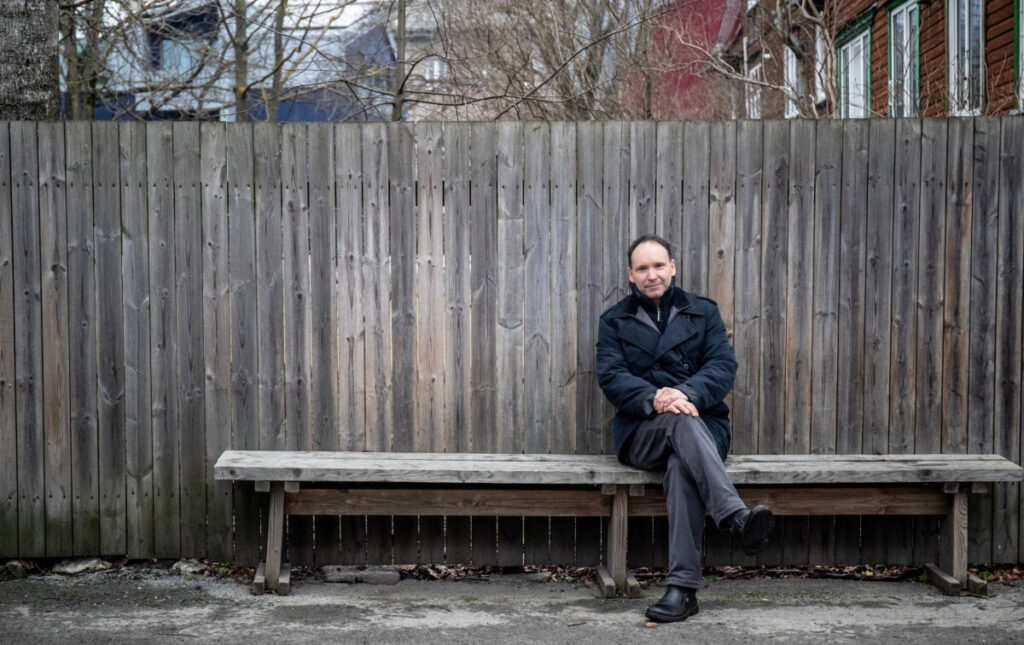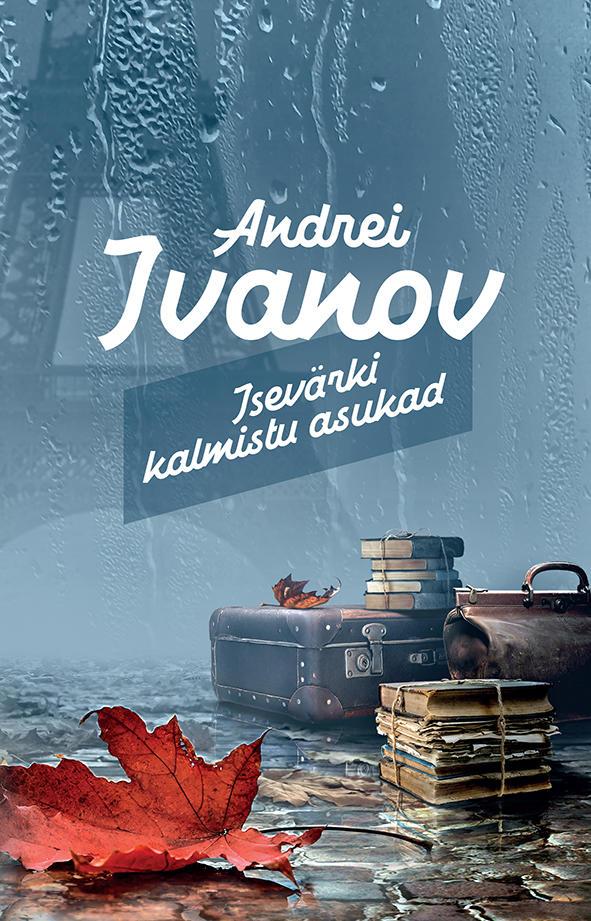Varrak 2019, 536 pp
ISBN 9789985347126
Homo viator, the travelling man, is one of the defining figures of our times, and Tallinn-based writer Andrei Ivanov is his messenger. Over the last ten years Ivanov has achieved the impressive feat of publishing more than ten books, almost all of which seek to understand the lives of wanderers, exiles, émigrés, the stateless, and other outsiders.
In 2013, Ivanov embarked on a new cycle of novels focussing on the history of Russian émigrés, the first part of which was Harbin Moths. Ivanov’s most recent work, The Inhabitants of the Curious Cemetery (2019), can be seen as the next instalment in this series, and is the author’s magnum opus. All of Ivanov’s main themes and literary influences come together in this novel, allowing his literary talents to achieve heights few other writers can aspire to.
Whereas Harbin Moths tells the story of Russian émigrés living in Estonia between 1920 and 1930, The Inhabitants of the Curious Cemetery focusses on the Russian émigré community in Paris, and spans half a century, focusing on three critical periods: 1918, 1946 and 1968. The two novels are linked through one of the characters from Harbin Moths, Alexey Kablukov, who dispatches noxious letters to Estonia about the Russian émigrés’ lousy life in Paris. Unemployed and outcast, Kablukov ends his days in a graveyard, in a marquis’ burial chamber. He doesn’t mention, however, either the name of the graveyard or the marquis. Eventually, the reader discovers that this is the ‘curious cemetery’ of the novel’s title, namely the dogs’ graveyard in Asnières-sur-Seine, which is thought to be the first of its kind, and was situated in an area not far from Paris where many of the Russian émigrés lived.
The Inhabitants of the Curious Cemetery is a panoramic novel that vividly brings to life the worlds of three generations of Russian émigrés in Paris. To recap, the Russian emigration began with the October Revolution and continued apace for two decades, meaning that by the start of the Second World War almost 80,000 Russians had established themselves in France. Paris quickly became the capital of Russian emigration, not to be replaced by New York until the middle of the century.
The novel contains multiple voices, including three first-person protagonists, whose voices start to overlap, to intertwine, and to set off unexpected echoes.
The colourful lives of the Russian émigrés are portrayed from the perspectives of three protagonists. We learn about the difficulties they have acclimatising, the traumas inflicted on them by war, their struggle against Communism, and their homesickness. In this world, real-life and fictional characters mingle freely; at the risk of oversimplification one can argue that there are three types of characters in the novel: fictional characters, characters inspired by real-life people, and real-life historical figures. For instance, a whole gallery of historical characters feature in the novel, including Nikolay Berdyaev, André Breton, Paul Éluard, Théodore Fraenkel, Charles de Gaulle, Pavel Milyukov and Boris Poplavsky.

It could be said that the city of Paris is the fourth character in the novel. Ivanov makes Paris almost physically tangible, and does so for all three of the historical periods the novel covers. Right at the start, the author gives a captivating description of Paris life, through the words of the character Morgenstern. To provide a flavour of his writing style, I quote it at length: “Paris whips you on, kicks you up the backside, sprinkles you with rain, splashes you in puddles, plays pranks on you, spits swearwords at you, whispers gossip in your ear, grabs at coat hems and shopfronts, pulls you close, kisses you on both cheeks, fishes cash out of your pocket, waves its hat at you, looks you longingly in the eye, and then embraces you in its dark, satin night.”
In addition to the richness of historical detail, The Inhabitants of the Curious Cemetery is a homage to the art of the novel. Ivanov has succeeded to host the majority of his literary influences here. There are multiple references to Dickens, in particular The Pickwick Papers, to Dostoyevsky and Tolstoy, while Céline and Joyce interact in intriguing ways, as do Bunin and Nabokov. One can detect the stylistic influence of Mikhail Bulgakov, traces of Cormac McCarthy’s literary devices, as well as the influence of Goncharov’s Oblomov.
However, the greatest appeal of The Inhabitants of the Curious Cemetery lies in the author’s command of language. No one else writes quite like Ivanov. His writing grabs the reader and pulls them into its embrace, wraps them in multiple narrative strands, and leads them through fictional labyrinths, providing intermittent flashes of light and relief, before dragging them back into its depths.
Ivanov creates entrancing literary worlds, he gets under the reader’s skin, conjuring up colours, smells, and emotions; he dictates the pace, providing a cathartic experience that is almost physically tangible.The Inhabitants of the Curious Cemetery is Ivanov’s first full-length symphony, a work in which he demonstrates his talents with every literary instrument. It is one of the most brilliant achievements in Estonian literature of the last few decades.
Marek Tamm is Professor of Cultural History at the School of Humanities in Tallinn University. His primary research fields are the cultural history of medieval Europe, the theory and history of historiography, and cultural memory studies. He has recently published Rethinking Historical Time: New Approaches to Presentism (ed. with Laurent Olivier; Bloomsbury, 2019), Juri Lotman – Culture, Memory and History: Essays in Cultural Semiotics (ed., Palgrave Macmillan, 2019) and Debating New Approaches to History (ed. with Peter Burke; Bloomsbury, 2018).

